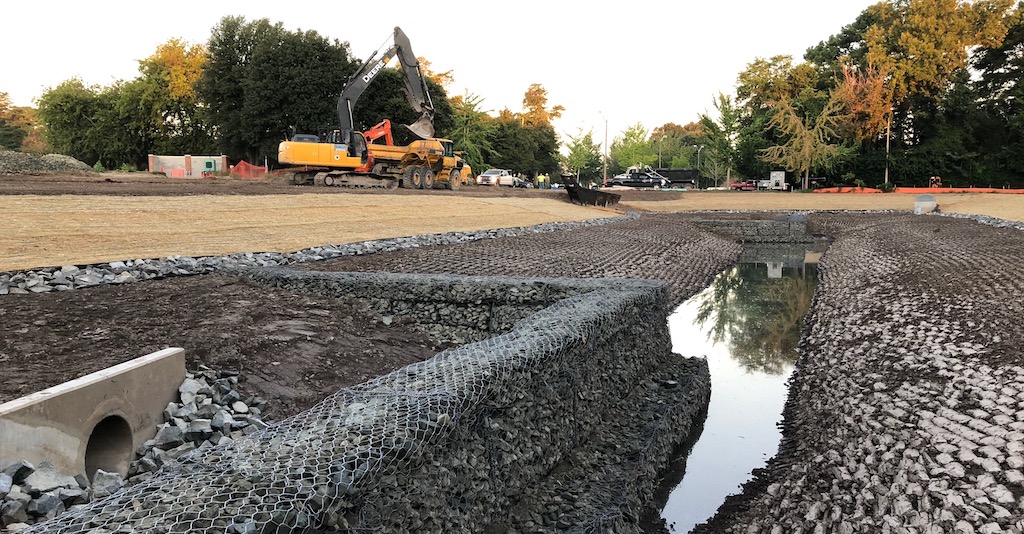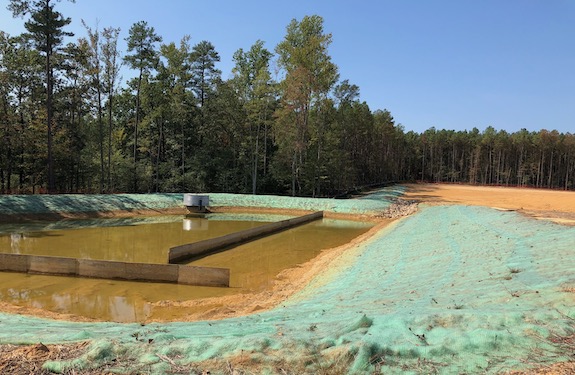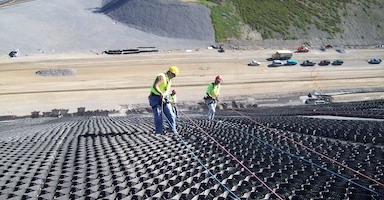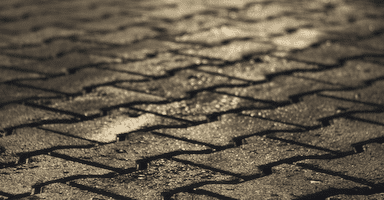14 MayWhat is a retention pond?
Retention Pond: Definition and Purpose
Retention ponds are permanent artificial ponds that store excess runoff. A retention pond is known by several different names: retention basin, wet pond, wet detention pond, stormwater pond and best management practice (BMP). Whichever name you prefer, the purpose of this stormwater management device remains the same: store runoff, promote sedimentation and prevent flooding.
Retention Pond vs. Detention Pond
Since a retention pond may be referred to as a wet detention pond, be careful not to confuse it with a detention pond or detention basin. Detention ponds are also known as dry ponds. This is a clue to the primary difference between the two stormwater management ponds:
- A retention pond is wet because it permanently retains water
- A detention pond is dry because it detains water for short periods of time
Although their functions are different, both basins are designed to capture sediment before filtered water is released.
Retention Pond Design and Construction
Retention ponds are permanent structures so their design must support longevity. You have likely seen retention ponds in neighborhoods, shopping centers and business parks. That’s because artificial ponds require a large amount of land. If land is in short supply developers have alternative options like subsurface stormwater systems. Retention basins, however, are the more traditional BMP and remain popular in much of the Mid-Atlantic.
Step By Step Retention Pond Construction in Virginia Beach
In Kempsville, a new Fourth Precinct building was constructed behind the former building’s location. In addition to the new Fourth Precinct building, the site added a playground and a larger parking lot. The development required a bigger retention pond to accommodate the expansion. At this specific location the water table is very high so the engineer made several design choices to prevent groundwater contamination.

Step 1: Install PVC Liner
After the construction site was cleared, the site-work contractor excavated the artificial pond and prepared the area for the PVC Liner.
PVC stands for polyvinyl chloride. These liners are strong, flexible and impermeable which is why they are used for separating water, waste and chemicals. They are commonly used for landfills and Stormwater ponds like this one in Virginia Beach.
Not all retention ponds requite a PVC liner. The engineer designed this retention basin with a liner because of the high water table. The impermeable PVC liner creates a barrier that prevents contamination of the groundwater system. As runoff enters the wet pond, the sediment will settle but the water will not infiltrate the groundwater system.

Liners cannot be installed when there is water in the pond. Once the pond was completely dry, the contractor installed 44,000 square feet of 50mil PVC liner.
Many liners are custom manufactured to meet site specifications. Liners of this size are usually made up of several panels. This site included:
- Eight 19.66’ x 200’ panels
- Two 18.7’ x 200’ panels
- One 25’ x 200’ panel
The contractors seamed the liner panels on site using an adhesive. The Fourth Precinct development required seventeen gallons of adhesive.
Step 2: Install Geotextiles
After the PVC liner was installed, the contractor installed an 8oz Nonwoven geotextile on top of the liner. The geotextile cushions and protects the liner in order to prevent puncture. If the liner were to be punctured, contaminants from the wet pond would seep into the groundwater system. This would compromise the purpose of the barrier and the retention pond’s function.
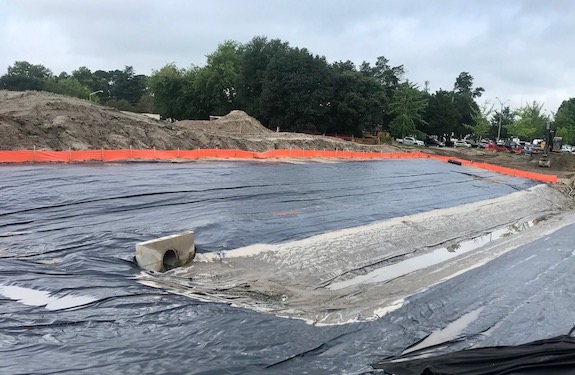
A miniature trench was then excavated around the perimeter of the pond. This rock filled trench is the point to which water will rise. The trench was lined with a 4oz Nonwoven Geotextile, commonly known as a drainage fabric. The porous 4oz Nonwoven Geotextile filters sediment and allows water to flow. The drainage fabric separates the soil from the rip rap.

This miniature trench also acts as a slope interrupter. If runoff flows down the slopes and towards the retention pond, the trench will slow the water’s velocity. This prevents erosion of the pond’s banks. The trench also captures some of the runoff’s sediment in order to prevent too much sediment from depositing in the pond.
Step 3: Install Gabion Baskets
After the geotextiles were installed, the contractor installed nine PVC Coated Gabion Baskets at the inlet to the pond. These rock-filled wire baskets are the pond’s forebays. Forebays collect sediment, slow the velocity of water and make maintenance easier.
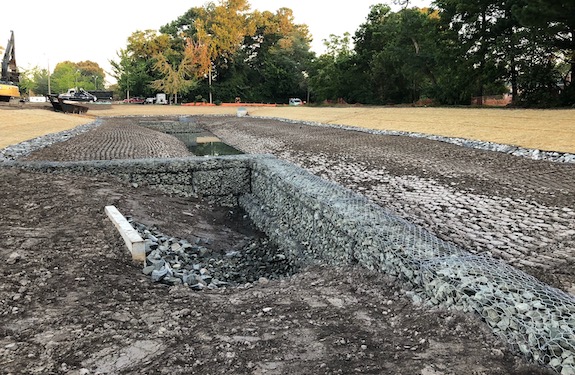
Step 4: Install Erosion Control Blanket and Plants
Single Net Straw Erosion Control Blanket was installed to stabilize the slopes. Lastly, they planted wetland plants to absorb excess nutrients.
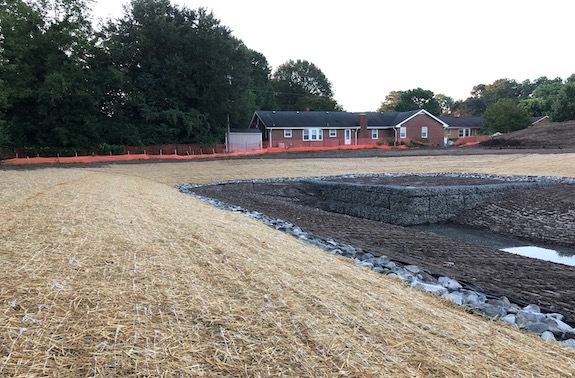
Threats and Design Challenges
Erosion may still occur even when ponds are properly vegetated. In another retention basin, strong wind storms created small waves that eroded the lake’s banks. Although the waves were small, the persistent wave action ate away the pond’s perimeter. The contractor installed coir logs around the pond’s perimeter. The natural wattle deflects the waves and protects the banks from future erosion.

Wet Pond Maintenance
Wet ponds require more maintenance than dry ponds because it is a permanent water source. The owner of the retention basin is generally responsible for the pond’s maintenance. That means the owner is responsible for routine maintenance and post-storm check ins.
General maintenance involves:
- Removing trash from in and around the wet pond
- Maintaining the vegetation that surrounds the pond
- Check the forebays for sediment build up and remove sediment as needed
- Resolve erosion issues
There are some companies that specialize in building and maintaining retention basins. Although we do not maintain retention ponds, we can connect you with reputable businesses that do maintenance.
Conclusion
Retention ponds may appear to be aesthetic features but their function is critical for proper Stormwater Management. Design, construction and maintenance are all site specific. That means there is not a one-size-fits-all retention pond design. Selecting the best erosion control and geosynthetic materials during construction will help ensure the wet pond’s success. These products will prevent issues like ground water contamination and erosion once construction is complete.
Contact us to receive pricing on the products highlighted in this article.
Discover More Stormwater Management Articles
Presto Geosystems Now Available at Colonial Construction Materials
New Manufacture Announcement: Now Supplying Presto Geosystems Our entire team at Colonial Construction Materials is…
Permeable Paving Solutions
Managing stormwater is a critical concern for municipalities, enJugineers and developers. As our communities grow…
Inlet Protection Product Guide
Stormwater solutions for construction sites Inlet protection devices trap and filter sediment laden runoff in…


